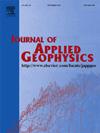Leakage channel detection in dams based on integrated geophysical methods
IF 2.2
3区 地球科学
Q2 GEOSCIENCES, MULTIDISCIPLINARY
引用次数: 0
Abstract
Dam leakage is a critical issue in reservoir operation, as it affects the reservoir's water storage function and the safety and stability of the dam. This paper proposes an integrated geophysical method that combines high-resolution shallow water seismic, ground penetrating radar (GPR), and pseudo-random flow field (PRFF) techniques to detect leakage channels in concrete dams. The seismic method is utilized to identify the distribution of the underwater medium in the reservoir area and the fault structure. The GPR method is employed to detect water-rich areas in the dam and assess the integrity of the impermeable wall. Additionally, the PRFF method is employed to locate leakage entrances in the base of the dam and the dam body. The analysis indicates that the leakage location in the dam base in this case is between 320 and 340 m, primarily associated with F1. The specific point of leakage in the dam body is at 341 m with an elevation of 51.0 m, mainly attributed to the failure of the water stop facilities. The potential leakage zone is approximately located around 243 m. The integrated geophysical approach enables the identification of dam base leakage, dam body leakage, and potential leakage zone, while also providing insights into the causes of leakage. Consequently, it can serve as a basis for effectively addressing dam leakage issues.
求助全文
约1分钟内获得全文
求助全文
来源期刊

Journal of Applied Geophysics
地学-地球科学综合
CiteScore
3.60
自引率
10.00%
发文量
274
审稿时长
4 months
期刊介绍:
The Journal of Applied Geophysics with its key objective of responding to pertinent and timely needs, places particular emphasis on methodological developments and innovative applications of geophysical techniques for addressing environmental, engineering, and hydrological problems. Related topical research in exploration geophysics and in soil and rock physics is also covered by the Journal of Applied Geophysics.
 求助内容:
求助内容: 应助结果提醒方式:
应助结果提醒方式:


